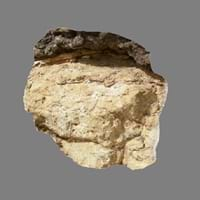Definition
Laterite rock is a type of Sedimentary rock which is rich in iron and aluminium, formed in hot and wet tropical areas
Gabbro is an intrusive igneous rock which is chemically equivalent to plutonic Basalt
Discoverer
Francis Buchanan-Hamilton
Christian Leopold von Buch
Etymology
From Latin later brick, tile + -ite1
From Latin glaber bare, smooth, bald
Class
Sedimentary Rocks
Igneous Rocks
Sub-Class
Durable Rock, Soft Rock
Durable Rock, Hard Rock
Group
Not Applicable
Plutonic
Other Categories
Fine Grained Rock, Opaque Rock
Coarse Grained Rock, Opaque Rock
Texture
Earthy, Massive, Porphyritic
Phaneritic
Color
Brown, Buff, Red
Dark Grey to Black
Durability
Durable
Durable
Appearance
Rough and Banded
Veined and Shiny
Interior Uses
Decorative Aggregates, Flooring, Interior Decoration
Countertops, Decorative Aggregates, Homes, Interior Decoration
Exterior Uses
As Building Stone, As Facing Stone, Garden Decoration
As Building Stone, As Facing Stone, Garden Decoration, Office Buildings, Paving Stone
Other Architectural Uses
Curbing
Curbing
Construction Industry
Cobblestones, for Road Aggregate, Landscaping, Roadstone
As Dimension Stone, Building houses or walls, Cement Manufacture, Construction Aggregate, for Road Aggregate
Medical Industry
Not Yet Used
Not Yet Used
Antiquity Uses
Artifacts, Monuments, Sculpture
Artifacts, Monuments, Sculpture
Commercial Uses
An Oil and Gas Reservoir, Source of bauxite, Used in aquariums
Cemetery Markers, Commemorative Tablets, Laboratory bench tops, Jewelry, Sea Defence, Tombstones
Types
Not Available
Not Available
Features
Is one of the oldest rock, Very fine grained rock
Smooth to touch
Archaeological Significance
Famous Monuments
Data Not Available
Data Not Available
Famous Sculptures
Data Not Available
Data Not Available
Pictographs
Used
Not Used
Petroglyphs
Used
Not Used
Formation
Laterite is a type of sedimentary rock which is generally a reddish weathering product of basalt.
Gabbro, a mafic rock, forms due to cooling and crystallization of magma underneath Earth's surface.
Mineral Content
Aluminum Oxides, Biotite, Hematite, Hornblade, Iron Oxides, Manganese Oxides, Micas, Muscovite or Illite, Plagioclase, Pyroxene
Augite, Olivine, Plagioclase, Pyroxene
Compound Content
Aluminium Oxide, CaO, Iron(III) Oxide, FeO, Potassium Oxide, MgO, MnO, Sodium Oxide, Phosphorus Pentoxide, Silicon Dioxide, Titanium Dioxide
Aluminium Oxide, CaO, Chromium(III) Oxide, Iron(III) Oxide, Potassium Oxide, MgO, Sodium Oxide, Silicon Dioxide, Sulfur Trioxide
Types of Metamorphism
Not Applicable
Impact Metamorphism
Types of Weathering
Biological Weathering, Chemical Weathering
Chemical Weathering
Types of Erosion
Chemical Erosion, Water Erosion, Wind Erosion
Coastal Erosion
Grain Size
Fine Grained
Coarse Grained
Fracture
Conchoidal
Conchoidal
Porosity
Highly Porous
Highly Porous
Luster
Dull
Not Available
Compressive Strength
Not Available
Cleavage
Not Applicable
Not Available
Toughness
Not Available
1.6
Specific Gravity
Not Available
2.86-2.87
Transparency
Opaque
Opaque
Density
Not Available
2.7-3.3 g/cm3
Resistance
Heat Resistant, Pressure Resistant
Impact Resistant, Pressure Resistant, Wear Resistant
Deposits in Eastern Continents
Africa
East Africa, Western Africa
South Africa
Europe
England, Romania, Scotland
Germany, Greece, Italy, Scotland, Turkey
Others
Not Yet Found
Greenland
Deposits in Western Continents
North America
Canada, USA
Canada, USA
South America
Not Yet Found
Brazil, Colombia, Venezuela
Deposits in Oceania Continent
Australia
Central Australia, Western Australia
New Zealand, Queensland
Laterite vs Gabbro Characteristics
Though some rocks look identical, they have certain characteristics which distinguish them from others. Characteristics of rocks include texture, appearance, color, fracture, streak, hardness etc. Laterite vs Gabbro characteristics assist us to distinguish and recognize rocks. Also you can check about Properties of Laterite and Properties of Gabbro. Learn more about Laterite vs Gabbro in the next section. The interior uses of Laterite include Decorative aggregates, Flooring and Interior decoration whereas the interior uses of Gabbro include Countertops, Decorative aggregates, Homes and Interior decoration. Due to some exceptional properties of Laterite and Gabbro, they have various applications in construction industry. The uses of Laterite in construction industry include Cobblestones, For road aggregate, Landscaping, Roadstone and that of Gabbro include As dimension stone, Building houses or walls, Cement manufacture, Construction aggregate, For road aggregate.
More about Laterite and Gabbro
Here you can know more about Laterite and Gabbro. The life cycle of a rock consists of formation of rock, composition of rock and transformation of rock. The composition of Laterite and Gabbro consists of mineral content and compound content. The mineral content of Laterite includes Aluminum Oxides, Biotite, Hematite, Hornblade, Iron Oxides, Manganese Oxides, Micas, Muscovite or Illite, Plagioclase, Pyroxene and mineral content of Gabbro includes Augite, Olivine, Plagioclase, Pyroxene. You can also check out the list of all Sedimentary Rocks. When we have to compare Laterite vs Gabbro, the texture, color and appearance plays an important role in determining the type of rock. Laterite is available in brown, buff, red colors whereas, Gabbro is available in dark grey to black colors. Appearance of Laterite is Rough and Banded and that of Gabbro is Veined and Shiny. Properties of rock is another aspect for Laterite vs Gabbro. The hardness of Laterite is 2 and that of Gabbro is 7. The types of Laterite are Not Available whereas types of Gabbro are Not Available. Streak of rock is the color of powder produced when it is dragged across an unweathered surface. The streak of Laterite is white while that of Gabbro is black. The specific heat capacity of Laterite is Not Available and that of Gabbro is Not Available. Depending on the properties like hardness, toughness, specific heat capacity, porosity etc., rocks are resistant to heat, wear, impact, etc.Laterite is heat resistant, pressure resistant whereas Gabbro is impact resistant, pressure resistant, wear resistant.





